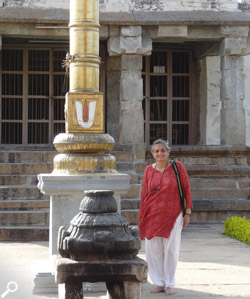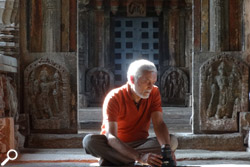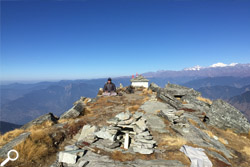Teachers
Swati and Rajiv Chanchani, a husband and wife team are founder-directors of the Yog-Ganga Centre. They began studying yoga in 1975 with Yogacharya B.K.S. Iyengar. Over the last four decades, Swati and Rajiv have spent several months each year at the Ramamani Iyengar Memorial Yoga Institute, Pune learning, practicing, appreciating, and assisting with the Iyengar family.
In the 1980s and 1990s, Swati and Rajiv were invited to teach yoga to defense personnel and students at premier institutions ranging from the National Defence Academy and the Indian Military Academy to The Doon School and the Welham Girls School.
In 1995, Swati and Rajiv published Yoga for Children: A Complete Illustrated Guide to Yoga Including a Manual for Parents and Teachers. This book has been acknowledged as a classic and pioneer and has been reprinted more than thirty-five times and been translated and published in French, Japanese, Korean, and Portuguese. Translations in other languages are underway.

In 1990s, Swati and Rajiv made a series of major breakthroughs by bringing yoga formally into the Indian educational system as a subject on par with English, Mathematics, Natural and Social Sciences. In 1999, the Indian Council for Secondary Education, the nation’s leading education board accepted their syllabus. Around the same time they designed and launched a diploma in yoga for school children. This diploma is today administered and awarded by Ramanani Iyengar Memorial Yoga Institute.
Also in the 1990s, Swati and Rajiv periodically advised the Indian government. Such consultancy included the conceptualization of the international yoga week at Rishikesh, the development and release of the nation’s first ever postage stamps of Yoga, and development of a special exhibition on Himalayan biodiversity and folklore.
Since the opening of the Dehradun campus of the Yog-Ganga Centre in 2001, Swati and Rajiv have been designing and teaching a remarkable series of yoga intensives. These intensives have been recognized as authoritative and appealing, enjoyable and rigorous. In these intensives they have been tracing the roots of yoga in mythology, legend, and history, and including many stories and tales bringing out the quality of and inspiration for postures. They have also been stressing the links of moral and ethical values implicit in the practice of yoga, including non-violence, truthfulness, and contentment. In addition, they have been highlighting geometrical forms and precision in the postures so that their students can relate abstract concepts through what they have learnt through their body movements.

Swati and Rajiv have also been continuously promoting and refining Yogacharya B.K.S. Iyengar’s skillful and pioneering adjustment of asanas to improve the health of individuals irrespective of their age and condition. They have been doing so by carefully using props, modifying individual asanas, designing dynamic sequences, and integrating asana and pranayama practice with the adoption of other components of the eight fold path of ashtanga yoga and its sister science, Ayurveda.
In more recent years, Swati and Rajiv have been extensively studying relationships among and between Indian aesthetics and yoga philosophy and practice. This pursuit has led them to read extensively, confer with scholars, visit museums worldwide, and scour hundreds of places of historical and cultural significance in India and to build up an extensive archive of representations of asanas in medieval Indian sculpture and painting. Ultimately, the creation of archive has furthered their own yoga practice.
Ultimately, the creation of archive has furthered their own yoga practice.
They are continuing to design new intensives at the Yog-Ganga Centre and at forums worldwide, and mentor their own students, some of whom have become teachers in their own right. Swati and Rajiv are also editing and writing articles and books, growing herbs, and medicinal plants. Finally, they are continuing to advise and assist friends and neighbors, government agencies, and non-government organizations seeking to conserve Rajpur’s rich historical fabric, biodiversity, and its renown as a sanctuary for spiritual seekers.
 |
 |
 |
 |
